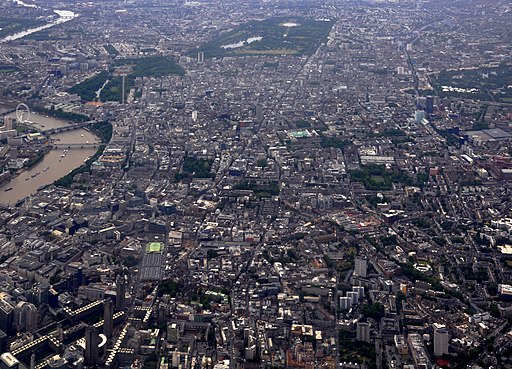Post
OPINION | Does London housing work for self-isolation?
14 Apr 2020
Professor Rebecca Tunstall suggests that London’s housing is implicated in London’s covid-19 cases
When the current Covid-19 crisis has abated, there will be vast amounts of research to explain what has happened and to try to prevent it in future. However, we already know that we do not have the right housing for self-isolation. We already know that housing is probably exacerbating the problems, and that this is particularly true in London.
Londoners have the highest rates of recorded Covid-19 infection per head of population to date. Public Health England (PHE) is reporting daily figures for people who have tested positive for Covid-19, by county and unitary authority (1). Based on the 42,990 cases to April 6th 2020, rates in London boroughs range from to 2.3 per thousand in Brent to 1.0 per thousand in Havering, compared to a national average of 0.8 per thousand. London boroughs are all in the top 50 local authorities.
London housing has two features which potentially support isolation. 32% of London households have just one person, just above the national average of 30%, according to the census. For them, keeping isolated at home is physically (if not mentally) straightforward, and they will only have to remain entirely at home and find support for 7 days if they get symptoms. London also has low proportion of residents in communal establishments, where isolation and social distancing are very difficult, at 1.2% compared to a national average of 1.8%.
London boroughs also have some of the youngest and healthiest populations of any local authorities nationwide. Ironically, however, PHE figures show that places with high proportions of residents aged over 70, with limiting long-term conditions and with bad or very bad health actually have lower rates of Covid-19, at least to date.
Instead, urban living and housing conditions seem to be much more important in higher rates of disease.
Being in a city seems to be a disadvantage in itself. There is a strong correlation between the population density in an area and its rate of recorded cases. London has the highest population density of any larger built-up area in England and Wales, at 56 people per hectare.
London also has the worst housing in the country for self-isolation. Perhaps the ideal home to isolate in would be a detached house, with several rooms, a second bathroom, and a garden... The PHE figures show a strong correlation between low rates of recorded cases and high rates of detached homes. However, 94% of London households do not have this kind of home. London has the lowest proportion of detached homes of any region or major built-up area other than Tyneside, at 6% of the total compared to a national average of 23%. 52% of London households, compared to 22% nationwide, live in flats, which generally have no private outdoor space, and which inevitably share corridors, lifts and stairwells, which make it impossible to reliably maintain distance from neighbours when leaving the building. The PHE figures also show a strong correlation between high rates of recorded cases and high rates of flats.
Londoners experienced no improvement in housing space per person over the thirty years 1981-2011, while at national level and in all other regions median housing space person grew from 1.5 to 2 room (2). Londoners now have the largest households of any region, at an average 2.5 people compared to the national average of 2.4. They have the smallest homes, at 4.7 rooms compared to the average of 5.4 (including larger kitchens but not bathrooms). In 2011, the median London couple had only three rooms, with probably just one bedroom, making it difficult for a vulnerable partner to isolate within the home. The median couple elsewhere had four rooms. All the top twenty local authorities with the least median space per person are in London, apart from Slough, and London boroughs make up 29 of the 50 local authorities with the lowest median space per person. Compared to 5% of households nationwide, 11% of London households are short by more than one room, according to the ‘bedroom standard’, which is used to define overcrowding, to allocate social housing and to set maximum housing benefit for renting households. In 15 London boroughs, people at the worst-housed 10th percentile has less than 1 room per person. Most people in England and Wales had more space than this as long ago as 1911! In Newham, the worst-off were the most crowded anywhere, with just 0.67 rooms per person. The PHE figures show a strong link between recorded Covid-19 cases in an area and the proportion of households with less than one room per person.
Housing policy first developed more than one hundred years ago, in response to justified fear that overcrowding promoted the spread of contagious disease. Even while the current crisis continues, we already know that we need to restate the century-old argument for housing policy: improving housing conditions for the worst-off is not only right in itself and right for their sake, but for the whole community.
[1] Public Health England (2020)Total UK COVID-19 Cases Update: Data as of Monday 6th April 2020 https://www.arcgis.com/apps/opsdashboard/index.html#/f94c3c90da5b4e9f9a0b19484dd4bb14
[2] Tunstall, R (2015) ‘Relative housing space inequality in England and Wales, and its recent rapid resurgence’, International Journal of Housing Policy, 15th Jan
Rebecca Tunstall is Professor Emerita of Housing Policy, Centre for Housing Policy, University of York and Visiting Fellow, Cambridge Centre for Housing and Planning Research
